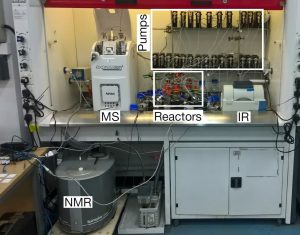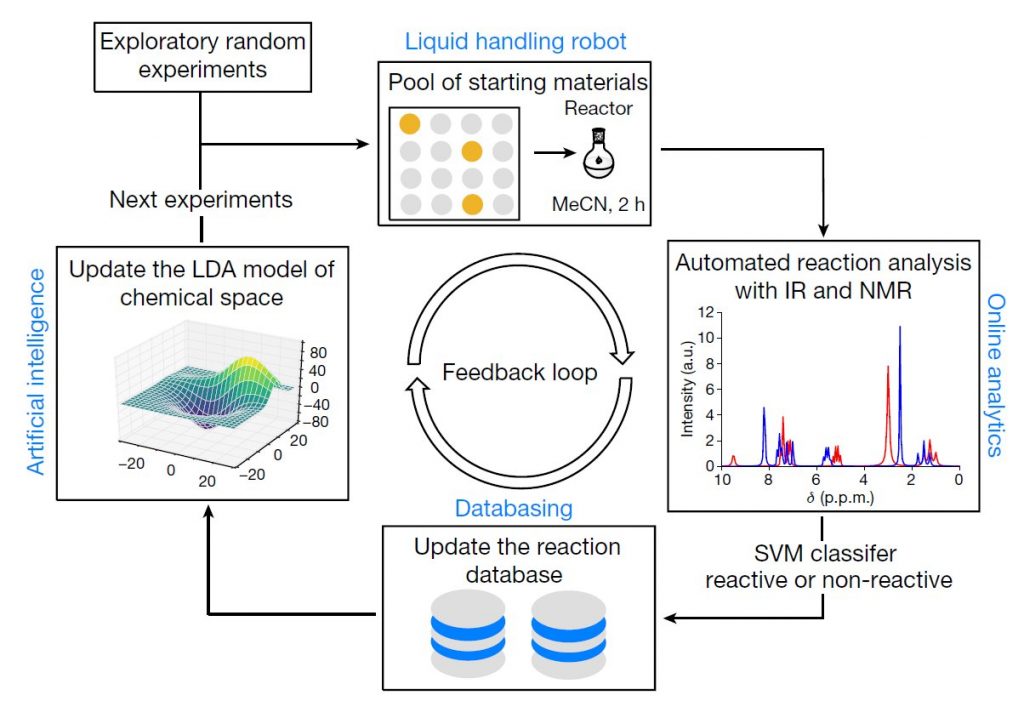The group of Professor Lee Cronin at the University of Glasgow has combined machine learning with a chemical reaction system to speed up the discovery of new chemical reactions, which is an inherently unpredictable and time consuming process. This new approach of an Organic Synthesis Robot uses a Spinsolve Benchtop NMR spectrometer as an integral component. Their work has just been published in the prestigious journal Nature: J. M. Granda, L. Donina, V. Dragone, D.-L. Long and L. Cronin, Nature 559, 377–381 (2018), DOI: 10.1038/s41586-018-0307-8

The photo shows the impressive setup of the chemical robot with 27 pumps, valves and six reactors, as well as NMR, IR and MS spectrometers for real-time analytics.
Cronin and his team show how an organic synthesis robot can perform chemical reactions and analysis faster than they can be performed manually. The paper has attracted a lot of attention already and a selection of news stories are listed below
The reactions are analysed automatically on-line using a combination of NMR, IR and mass spectroscopy. It is great to see the fantastic specificity of benchtop NMR being put to use for such a unique application. The system needs to be trained by the expert chemist, but after that it is able to automatically assign reactivity using machine learning. With such an automatic reactivity searching, a range of new reactions and molecules were discovered. “There are so many molecules we need to search for and make, there’s no way we could even scratch the surface without some help“, Cronin says.

The full article can be found here, and you can see a larger list of Spinsolve research publications here.